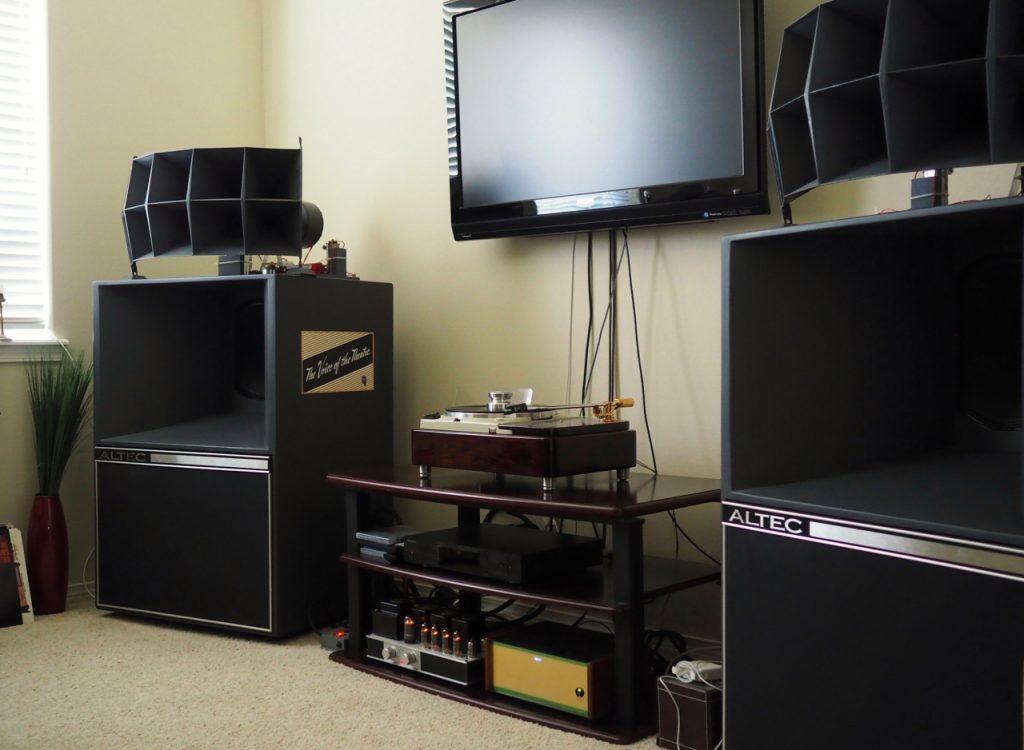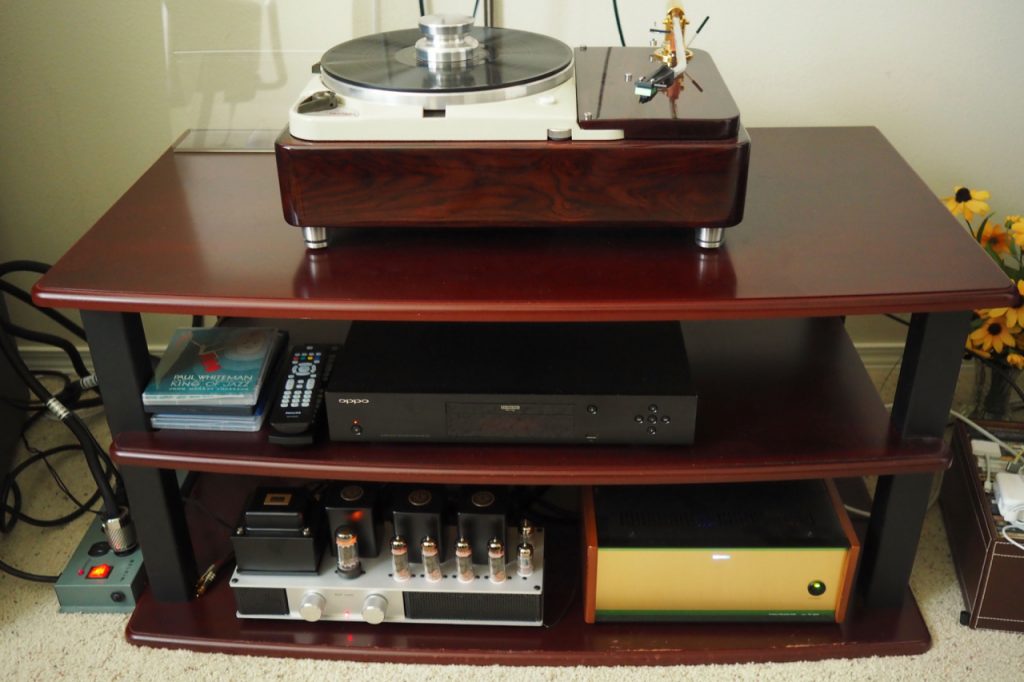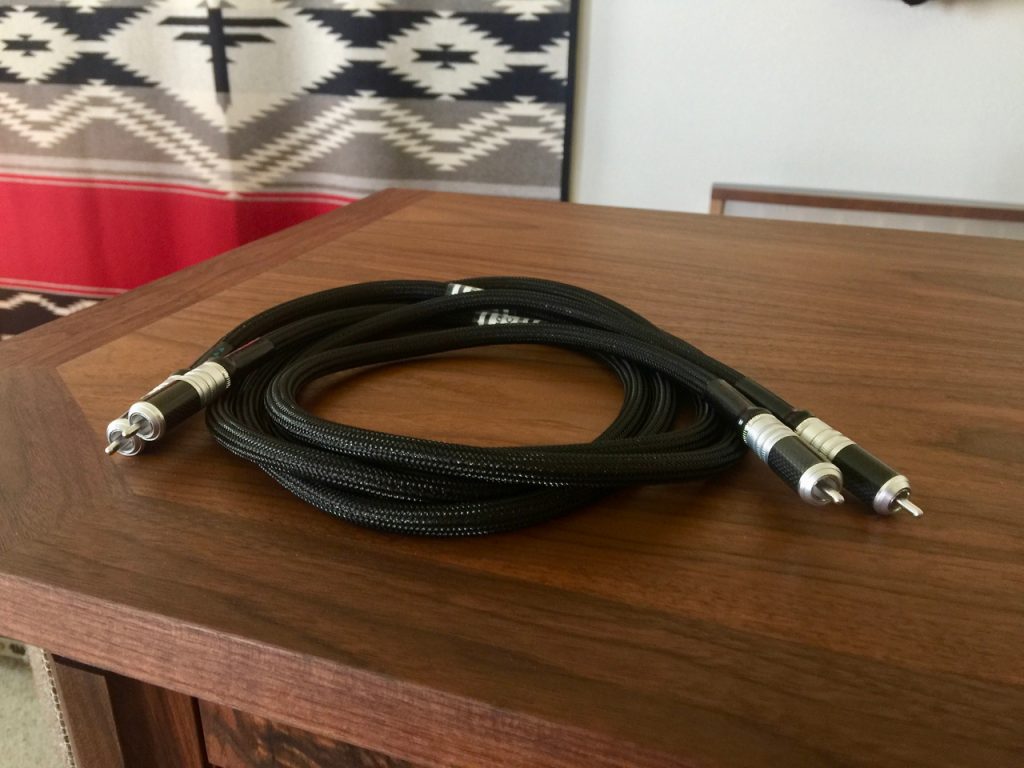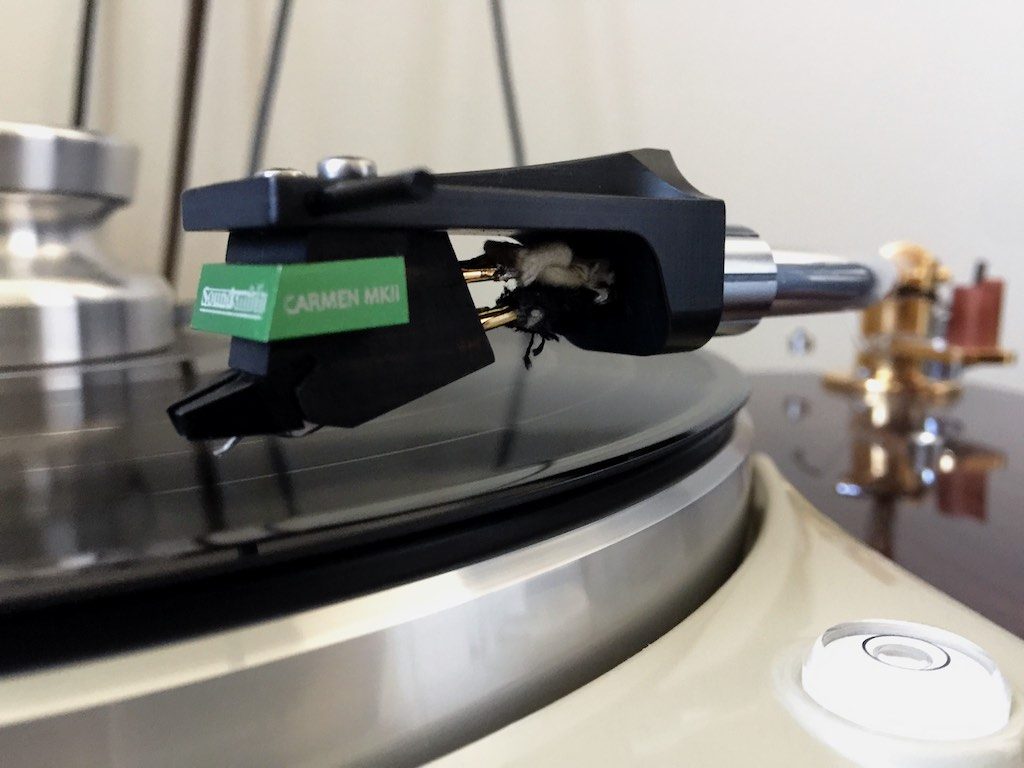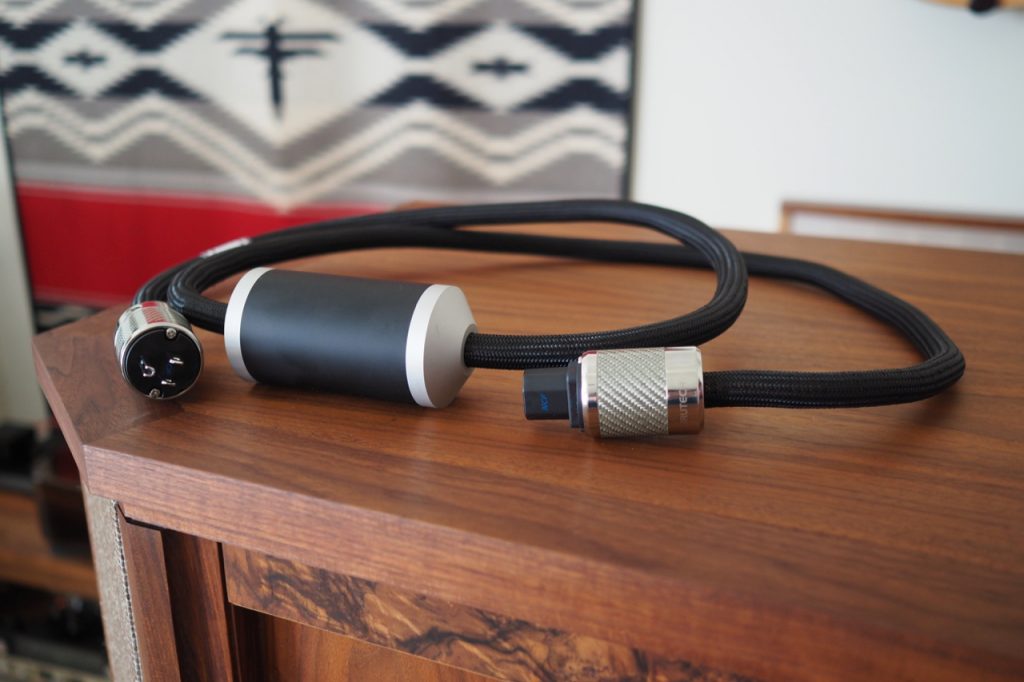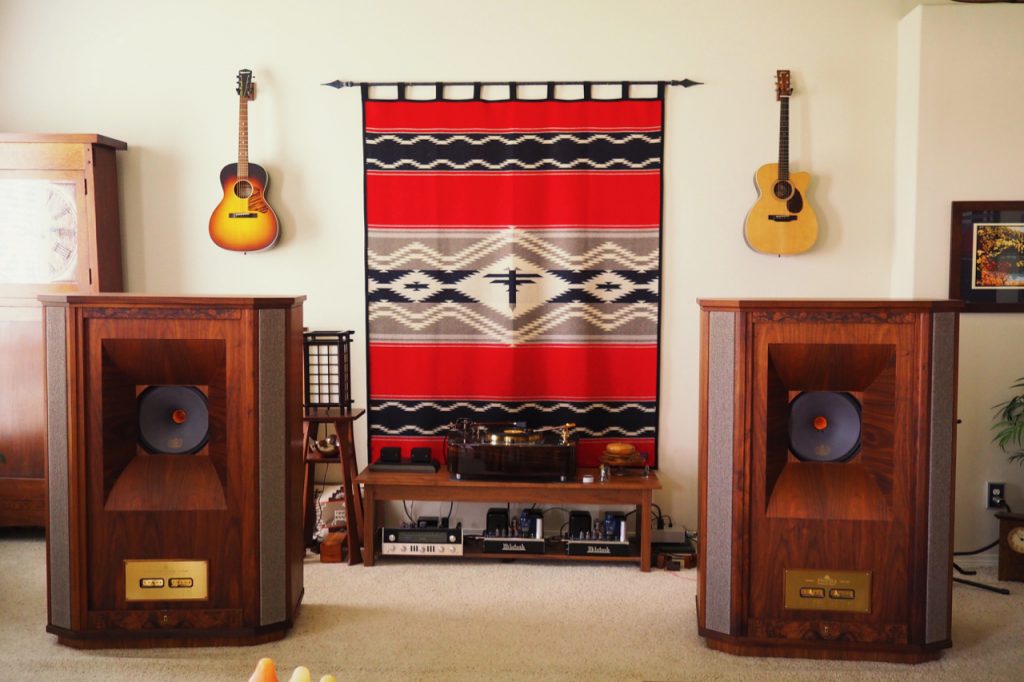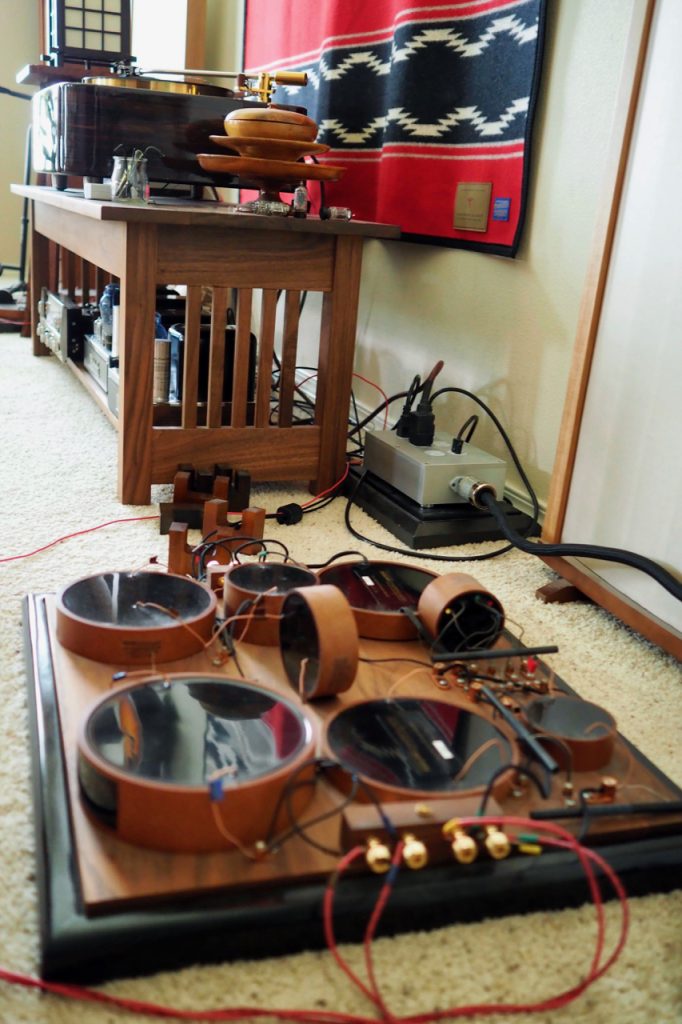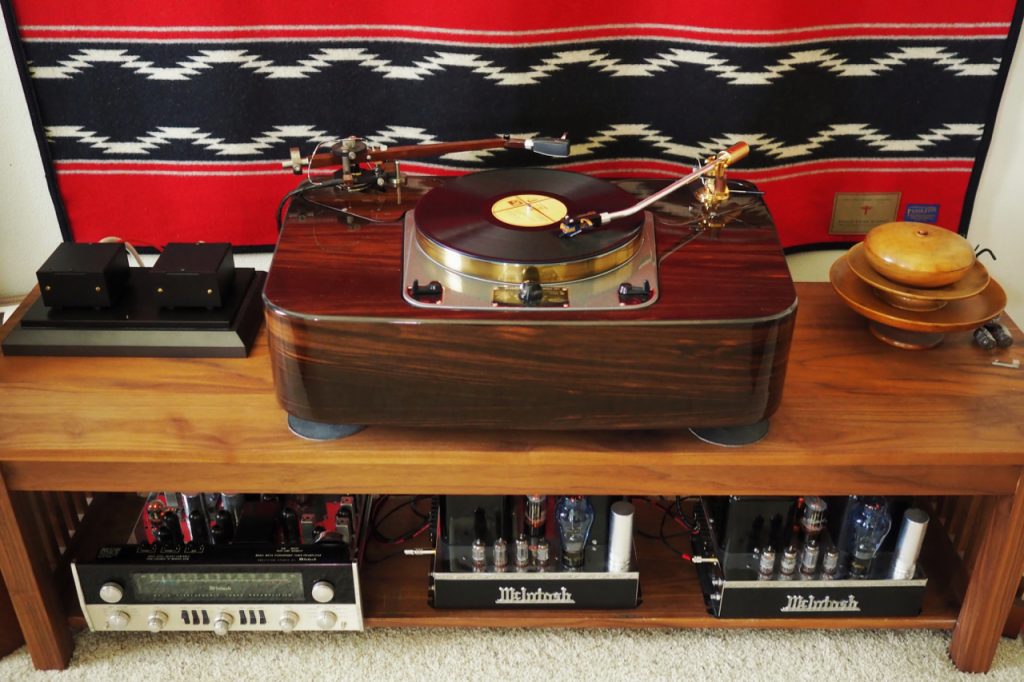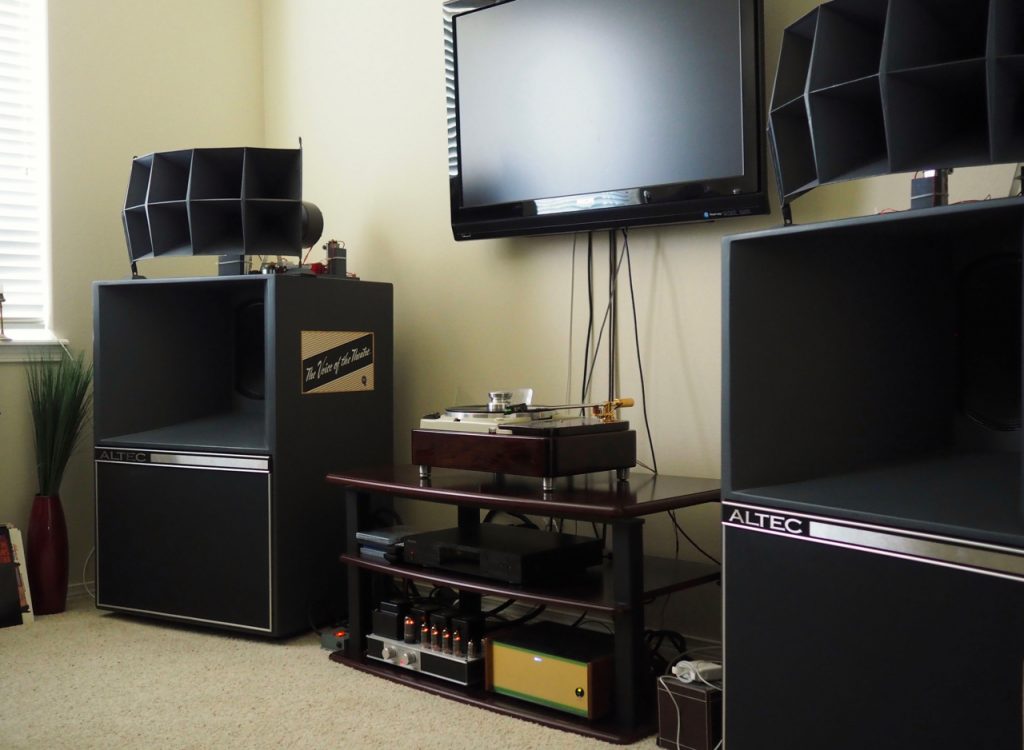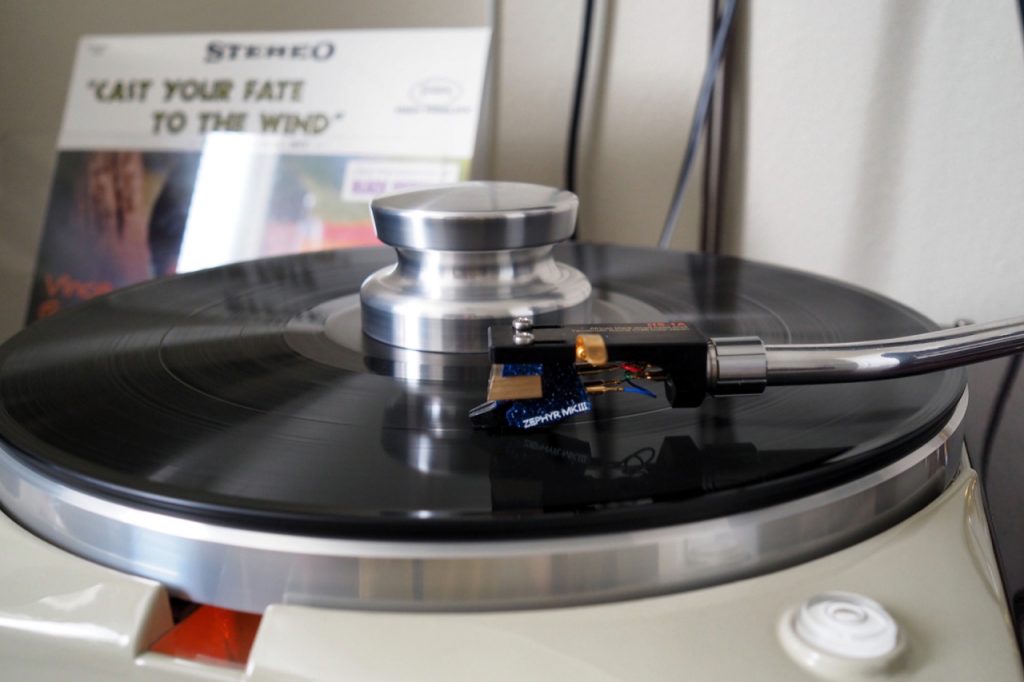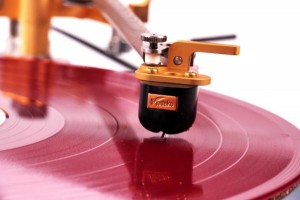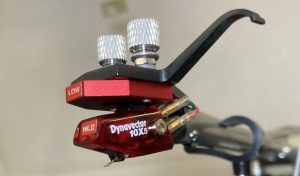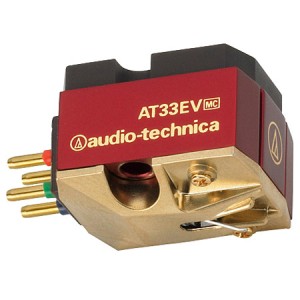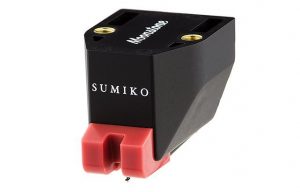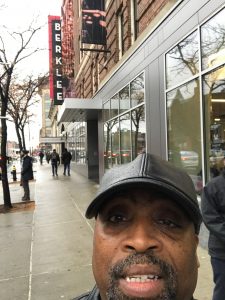Review Systems
For this review of the Soundsmith Zephyr Mk III phonograph cartridge I used two different audio systems, in order to offer broader insights into its musical & sonic performance than one system could provide.
The first system (above) used for this review consisted of restored vintage Altec A5 Voice of the Theatre loudspeakers with Western Electric WE16GA internal wiring, Hiraga-inspired crossovers, a Still Audio EL84 integrated amplifier (above, in for review), and a Leben RS-30EQ phono preamplifier.
Speaker cables used were Duelund DCA16GA tinned-copper, with Acoustic Revive RCA Absolute FM interconnects (above, in for review) connecting the Still Audio EL84 integrated amplifier to the Leben RS-30EQ phono preamplifier, which in turn was connected to a Thomas Schick 12-inch tonearm mounted on an Artisan Fidelity Thorens TD124 Statement Long-Base turntable.
The phonograph cartridge used as a comparator was the Soundsmith Carmen Mk II (above, reviewed HERE).
The power cords for the Still Audio EL84 integrated amplifier and the Leben RS-30EQ phono equalizer were the new Acoustic Revive Absolute Power Cords (above) that are in for review.
The second system (above photos) consists of Tannoy Westminster Royal SE loudspeakers with internal Western Electric WE16GA tinned-copper internal wiring, external Duelund CAST crossovers, Duelund DCA12GA tinned-copper speaker cables, vintage McIntosh MX110Z tuner-preamplifier and MC30 monaural amplifiers, Duelund DCA20GA tinned-copper interconnects, shielded Duelund DCA20GA tinned-copper interconnects from the MX110Z to the bespoke Intact Audio nickel-core monaural step-up transformers, which connect to a Pete Riggle Audio Engineering 12.5-inch Woody SPU tonearm mounted with an Ortofon SPU Classic GM MkII stereo phono cartridge that was used as a comparator. The Woody SPU tonearm and a 12-inch Thomas Schick tonearm reside upon an Artisan Fidelity "Statement" dual tonearm plinth, which houses my Classic Turntable Company "Classic 301" (a very hot-rodded Garrard 301).
Listening Evaluations
Before I delve into my listening impressions with the Soundsmith Zephyr Mk III on the above two systems, allow me to provide you an overview of what I listen for when I evaluate component performance during reviews, to help give you some additional context.
I find it useful to partition my perceptions into two broad (and somewhat overlapping) categories while listening: musicality and sonics.
The musicality aspect of a component's performance is related to its performance on the basic elements of music. I listen for how close a component comes to presenting recorded music realistically compared to live music, in terms of timbral realism (the unique ‘voices' of instruments), the resolution of tone color (the ability to distinctly hear the chordal variations resulting from adding additional pitches to three tone triads), melody (the tune you ‘whistle while you work'), harmony (treble & bass accompaniments to the melody), rhythm (the steady beat that determines the tempo), tempo (speed), dynamics (variations in loudness), and loudness (the ability to play naturally at live-like levels appropriate to a piece of music).
The second category of performance I listen for is sonics, which describes the performance of a component in reproducing the non-musical artifacts of the recording process, like transparency (the ability to ‘see' into the recording), resolution (the amount of detail in the audio signal that is audibly presented), soundstage (the ability to discern the three dimensions of the recorded space in width, height and depth), the soundspace (the ability to convey the acoustic sense of ‘space' of the recording venue), and imaging (the ability to localize instruments & musicians on the soundstage).
Finally, I listen for the ability of a component to integrate musicality & sonics in a way that maximizes an emotional response similar to a live music listening experience.
I find components that are capable of playing naturally at realistic loudness levels, are dynamically realistic, have a lot of presence, and can realistically portray timbral textures, tone color, tempo, and beat will be more emotionally engaging and musically satisfying for me.
I suppose that every hifi system and listener will be a little different in what they need and prefer to achieve for their perfect balance of musicality & sonics, but that's my take on things.
Listening Impressions
Let's start with my restored vintage Altec A5 Voice of the Theatre loudspeaker-based system first. The vintage Altec A5's are impressive loudspeakers that are surprisingly flexible and room friendly, given they were intended to provide ample sound specific to the needs of small-to-medium sized movie theaters.
To achieve that flexibility and room friendliness, the Altec A5's movie theater-style crossovers need to be replaced to adapt the big beasts to a domestic listening environment. With my Hiraga-inspired domestic-suitable crossovers voiced appropriately, the Altec A5 loudspeakers adapted remarkably well to the rather small spare bedroom in my home that I use as an audio-video room, with dimensions of 11-feet x 12-feet x 9-feet (ceiling), with a 6′ x 3'5″ x 9′ foyer on one end.
The big vintage Altec A5 Voice of the Theatre loudspeakers make movie soundtracks come captivatingly alive, sounding totally immersive and wondrous, and they are remarkably musical for music-only listening as well.
If someone tells you the big Altec A5's can't be stunning in small rooms don't you believe it—big vintage Altec's with appropriate crossovers and voicing have become my favorite small room loudspeakers!
I mounted the Soundsmith Zephyr Mk III onto a Yamamoto Sound Craft Blackwood headshell, which I installed onto the Thomas Schick 12-inch tonearm that is on my Artisan Fidelity Thorens TD124 Statement Long-Base turntable, got it aligned correctly, set the azimuth, and dialed in the tracking force to a touch less than 2.2 grams.
I followed Peter Ledermann's advice on setting the cartridge's anti-skate, which you can watch two instructive videos about HERE.
Peter's method for setting anti-skate was new to me, so I was interested in giving it a try. It also happens to be the preferred method of tonearm designer Frank Schröder, as well as being rather easy to implement.
To get a feel for overall performance of the Zephyr Mk III, I listened to a variety of jazz, blues, rock, pop, and classical albums, of which I'll share a few pertinent impressions with you.
I've always enjoyed the Vince Guaraldi Trio's 1962 Jazz Impressions of Black Orpheus on the Fantasy label, and my favorite version is the Analogue Productions 45RPM version from the "Fantasy 45 Series" (AJAZ 8089, Fantasy – 8089).
A little interesting note for you about the album's cover of the Analogue Productions version versus the original is that the album title Jazz Impressions of Black Orpheus and the hit song title "Cast Your Fate to the Wind" were switched in position and font sizes. Instead of the album title Jazz Impressions of Black Orpheus being in the upper left in a large font like the original version, it is lower and to the right in a small font, and the hit song "Cast Your Fate to the Wind" is in a large font where the title would normally be on the album cover. I like the original album cover better, and the Analogue Productions version of the cover always strikes me as odd, but there's no denying that the Analogue Productions version is the far better sounding of the two.
With the Zephyr Mk III playing the tunes on Jazz Impressions of Black Orpheus I immediately noticed its prowess in portraying tempos and dynamics, both of which are among its strengths. Whether a faster piece like "Samba de Orpheus" or a slower tempo piece like "Manha de Carnaval", I got real insights into how Vince Guaraldi (piano), Monty Budwig (double bass), and Colin Bailey (drums) were using the tempos and dynamics to achieve a particular musical effect in their playing, and it gave a nice live-like feel to the music.
Given the combination of my Thorens TD124 turntable and vintage Altec A5 Voice of the Theatre loudspeakers is not the last word in resolution of vinyl detail, the extra resolution, musical nuance, and vivid imaging the Zephyr Mk III offers was welcome indeed. With the Zephyr Mk III I heard lots of natural sounding timbral textures, a beautiful recovery of even the subtlest overtones and harmonics, and lots of "sense of touch" of the musicians upon their instruments, which I found to be really enjoyable as I listened.




